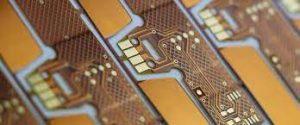flex pcb manufacturer
A flex pcb manufacturer is one who can produce both single- and double-sided flexible circuits. They can also offer multi-layered flex PCBs that allow for more complex connections than a standard rigid FR4 design. This makes them suitable for a wide range of applications. These applications include medical, LED lighting and power systems. They are also used in a variety of manufacturing and design industries.
Flex PCBs are thin and can fit into tight spaces. They can also accommodate more connectors and screen panels than rigid PCBs. In addition to that, they can also withstand higher temperatures. This is important for components that are exposed to the body.
Using a flex pcb can also eliminate connectivity issues early on in the design process, which can reduce assembly time and costs. It can also help prevent problems that would require costly reworking or testing.
Flex circuits are made out of a flexible substrate, typically Polyimide, but can also use other materials such as FR4. They can also be manufactured in both single- and double-sided designs. They can be built with through-hole or blind and buried vias. They can be used in a wide variety of applications, including medical devices, LEDs, mobile phones and computers.

What is a flex pcb manufacturer?
The first step in making a flex circuit is to lay out the design on the substrate. This can be done manually or with a computer-aided design (CAD) system. Then, the conductive layers are placed on top of each other. After this, the copper is deposited and chemically plated. The plating thickness is usually 1 mil in order to add mechanical support to the pads and vias. A photosensitive etch resist is then applied to the film surfaces and the desired mask pattern is used to expose and develop it. The exposed copper is then etched away.
Coverlay is an additional layer of insulating material that protects the circuit from contaminants such as solder. It can be either an adhesive or non-adhesive. A photo-imageable solder mask can be used to apply the coverlay, or, for coarser covers, screen printing can be utilized.
Stiffeners are often used to stiffen specific areas of the flex circuit that are not designed to bend. They can be laminated to the flex or adhered with a PSA. Rigid boards do not need stiffeners.
Flex circuits are most commonly found in the automotive and consumer electronics industries, but are starting to make their way into other industries as well. They are becoming more common in medical applications because of their flexibility and durability. They can also be used in areas where space is limited and connectivity issues need to be resolved. They can also provide significant cost savings, especially in high-volume production runs. This is because they can reduce the number of test and assembly steps. They can also be more resistant to harsh environments, such as those found in the automotive industry. Lastly, they can help manufacturers meet environmental regulations.
